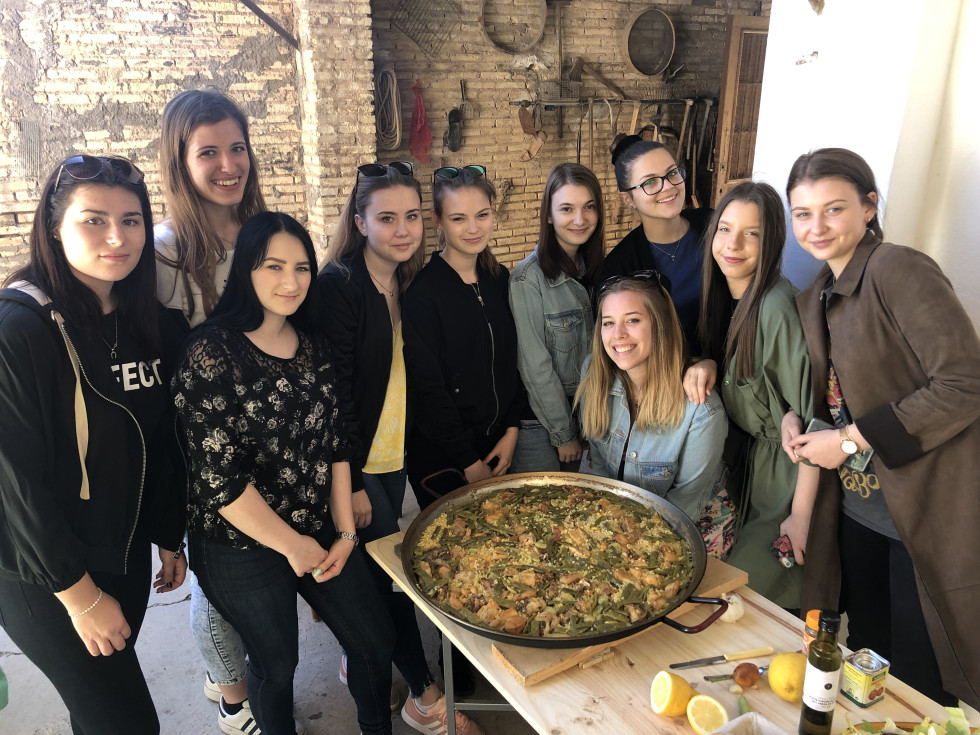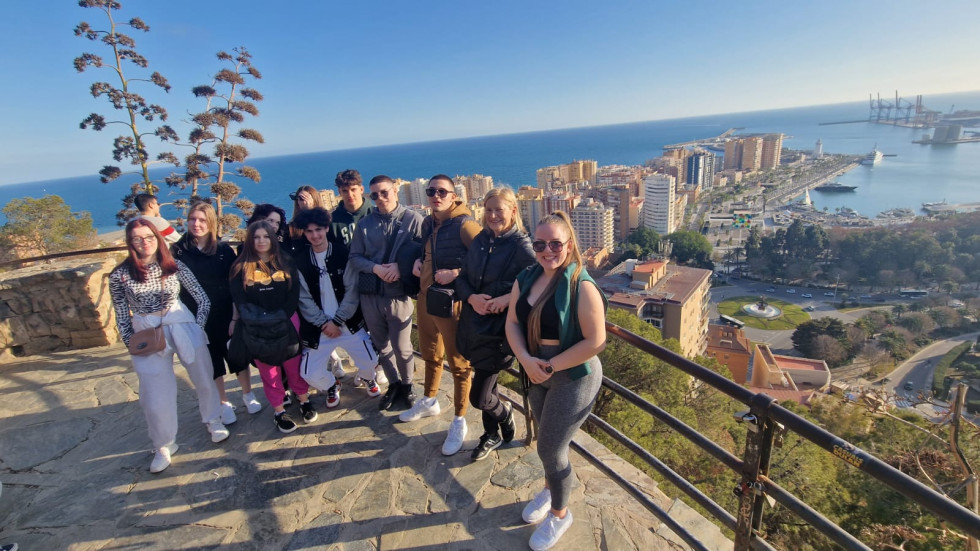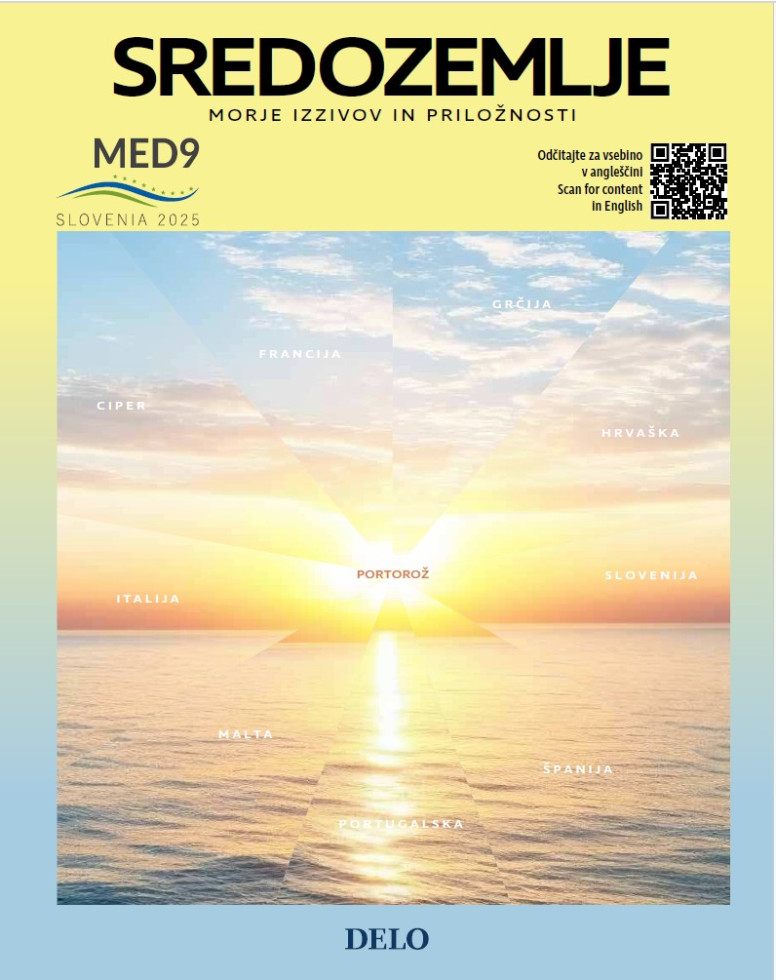Mediterranean countries more popular for education, northern for work
In April, the MED9 ministers of higher education met in Brdo pri Kranju to discuss a key issue: how to turn the brain drain from the Mediterranean region into a positive brain circulation. The situation varies from country to country; some are countries of origin, others countries of destination, others still transit countries. That is why Slovenia proposed the establishment of the Mediterranean Mobility Mechanism (MMM) as a regional mobility programme. According to the Ministry of Higher Education, Science and Innovation, "The mechanism would adopt a network-based approach: each country would contribute funding to host foreign students and teachers, while mobility would be based on university networks and partner programmes. This model is simple and financially adjustable. It is also flexible in terms of the degree to which individual Member States want to be involved in the programme and in terms of expansion into other forms of cooperation."
The ministry added the key advantage of the MMM was that it could be implemented together with Erasmus+ and other programmes, with cooperation both within the MED9 and with Southern Mediterranean countries. A working group that will develop the concept of the MMM was established at the April conference. In addition to MED9 countries, the group also includes the Union for the Mediterranean as an observer, which brings together EU Member States and 15 countries from the southern and eastern shores of the Mediterranean.
Connection is key
The Ministry of Higher Education indicated that recent discussions about how to strengthen academic cooperation in the Mediterranean region were initiated by the Piran-based Euro-Mediterranean University (EMUNI), co-founded by the University of Maribor. According to EMUNI, it enrols students from more than 20 countries, mostly Europe and the Southern Mediterranean. They stressed the need to implement the MMM scholarship scheme as soon as possible: "There is a significant gap between the number of applicants and the number of enrolments – that is, between young people’s aspirations and the actual opportunities available. This is mainly due to the lack of a supporting scholarship scheme and the complicated visa procedures that restrict access for students from the southern coast of the Mediterranean. EMUNI is striving to overcome both obstacles, as this is essential to ensuring true intercultural mobility. This opens an opportunity for MED9 to get actively involved in the response to these challenges with the aim of establishing a MMM scheme and reforming the visa regimes, which would significantly increase the participation of young people from the region."
While existing mobility programmes do enable cooperation with Southern Mediterranean countries, participation figures are very low according to EMUNI: "Currently, fewer than 1% of these students take part in mobility programmes, which falls far short of the EU’s ambitious goal of ensuring that at least 23% of all graduates participate in international exchange by 2030."
The University of Maribor, where almost half of all student and staff mobility is carried out with institutions from MED9 countries, responded that, as a significant part of the Mediterranean’s development challenges goes beyond EU borders, they support the initiative of continuing the discussion about the expansion of the MMM to include the entire Mediterranean region: "As part of our participation in the Erasmus+ programme, we have established a strong network of partner institutions in Southern Mediterranean countries. In recent years, we had to focus mostly on working with higher education institutions from Egypt, as the Erasmus+ programme funding for this region is only enough to cover cooperation with a small number of partners if we wish for these partnerships to be long term."
Challenges
Young people in MED9 countries have good higher education opportunities; all of these countries are members of the European Higher Education Area and actively participate in the Bologna Process, according to the Ministry of Higher Education. They added that many strong universities are involved in these countries, but that remaining challenges include "the brain drain, the mismatch between the course catalogue and the environment’s development needs, and unbalanced mobility". The University of Maribor reported similar findings: "Southern and eastern EU Member States still have an above-average outflow of highly skilled workers compared to north and central Europe, which weakens local innovation ecosystems. The objective of mobility should not be only mobility but also knowledge circulation. Discrepancies between skills and labour market needs are also increasing."
The University of Ljubljana, where 42% of all outgoing students in the last academic year went to and 48.5% of all incoming students came from MED9 countries, also highlighted the universities’ responsibility: "The future of young people in the MED9 region mostly depends on the countries’ economic development, their flexibility and capability to follow market demands and technological development. It is essential that universities as the most important national educational institutions follow the needs of the labour market and update their study programmes accordingly or open new ones and adapt the number of places in programmes based on increasing or decreasing demand."
Spain’s popularity
According to the Centre of the Republic of Slovenia for Mobility and European Educational and Training Programmes, the national Erasmus+ programme agency, the most popular countries for the mobility of pupils, students and personnel are Spain and Portugal, while the least popular are Malta, Greece and Cyprus. The highest number of incoming young people and personnel come from Spain, followed by France.
Natali Borinc, Head of the International Office of the Alma M. Karlin Vocational Education Centre (SIC) in Celje, said that when the school’s international activities began more than 20 years ago, they initially chose projects and mobility programmes to countries that were popular among young people. Today, the school offering tourism and gastronomy programmes chooses countries based on the intended purpose of mobility: "We invite mentors from the private sector to tell us what the labour market needs are, where they see the biggest shortages, who the most typical guests are..."
The majority of SIC high school students go abroad for practical training with employers. As most of them want to go abroad during the summer holidays, MED9 countries are less appropriate, says Borinc. "You can’t send a student to work in kitchens in 40 degrees Celsius. We ask ourselves, what do we want to gain with the mobility, what do we want the student to learn? And if we can find this in a MED9 country, we will offer it. We’ve sent students to Madeira, for example. Not so they could enjoy the seaside but because Madeira has all-inclusive, five-star hotels and is a model of tourist destination excellency. We want them to gain experience, professional competence and knowledge, become more confident, improve their self-esteem, see that they are valued, that they work well."
Genuine hospitality
Celje Primary School II is just completing a mobility project with a partner school in Portugal. The focus of the project was the inclusion of all pupils. It also involved teacher training, as they looked for schools with many immigrants and special needs pupils. The school’s coordinator of the Erasmus+ project, Petra Kontarček Rabuza, admits that they first selected the country and only afterward looked for a partner school. "Portugal attracted us because of its distinctiveness: the Atlantic Ocean, a different climate and pronounced Christian tradition, which has a profound impact on society. The biggest benefit that truly amazed us was the incredible hospitality. We felt more than welcome. Portugal is not among the most materially rich countries, but we felt a different kind of wealth there – the people’s warmth, kindness and sincerity. It wasn’t fake, as is evident from the genuine relationship we maintain to this day and is a good basis for future cooperation."
Natali Borinc also says that even though MED9 countries differ from each other significantly, they all share genuine hospitality: "This is what we learn from them. Warm relations. Feeling welcome. There is a special kind of energy in their cities, people socialise. When they come to us, they are quite shocked. First, they realise that the city is already buzzing with activity at 7 or even 6 AM, and when they want to go out for a drink in the evening, it’s like a ghost town. Only Ljubljana and Maribor are a bit livelier." But learning multiculturalism is key, says Natali Borinc. "Last year’s experience of southern Italy was very special for our students. They discovered the local lifestyle and quality of life, realising that their workload could not be compared to ours. They were quite miserable because they are used to working much more. It is not a question of right or wrong, it is about adaptation and multicultural learning." But they can also learn the dark sides, for example how some employers treat their workers, including young people in mobility programmes, added Natali Borinc. "On the one hand is the glamour of a five-star hotel, where there are so many dishes it’s impossible to try everything, and on the other is the life of the employees who get a bowl of boiled rice with some sauce, a piece of bread with jam for breakfast, and accommodation without windows or sunlight."
Lost in translation
But despite some such experiences, MED9 countries remain among the most popular destinations. Natali Borinc says that when she told the students that they were going to Finland, they saw it as a punishment. "They were positively surprised in the end, but their first choice would have been the Mediterranean. But the reverse is also true. We have a lot of potential that we don’t exploit. Just now we’re hosting an Italian who honestly told us that he was disappointed when he learned he was chosen to come to Slovenia. Of course, people change their minds after going through our programme. But we have great connections with France, where we are very popular. The French say that we have a similar way of working and that our cuisine is among the best."
All interviewees agreed that young people also make a lot of progress in language proficiency through mobility. But while there is less fear of not understanding something among primary school pupils, high school students going to work abroad may experience more problems. The same goes for students, according to the University of Ljubljana: "Sometimes returning students say that they were unable to fulfil their study obligations due to language difficulties, as classes at many institutions are held in the local language, which poses a serious obstacle for many of our students. The Erasmus+ programme successfully encourages students to learn the language of the host country, but the academic language level in some cases is too big an obstacle, even though most students have the possibility to do exams in English."
The aim of cooperation and mobility is not for countries to "steal" each other’s workforce but to enrich each other. In the words of primary school teacher Petra Kontarček Rabuza: "We see Erasmus+ projects as a bridge allowing young people to understand these challenges and try to resolve or mitigate them with partner countries. As a primary school, we are incredibly proud to participate in such projects. They allow our pupils and teachers not only to gain invaluable experience but to spread their horizons and enrich both the local environment and society as a whole."




